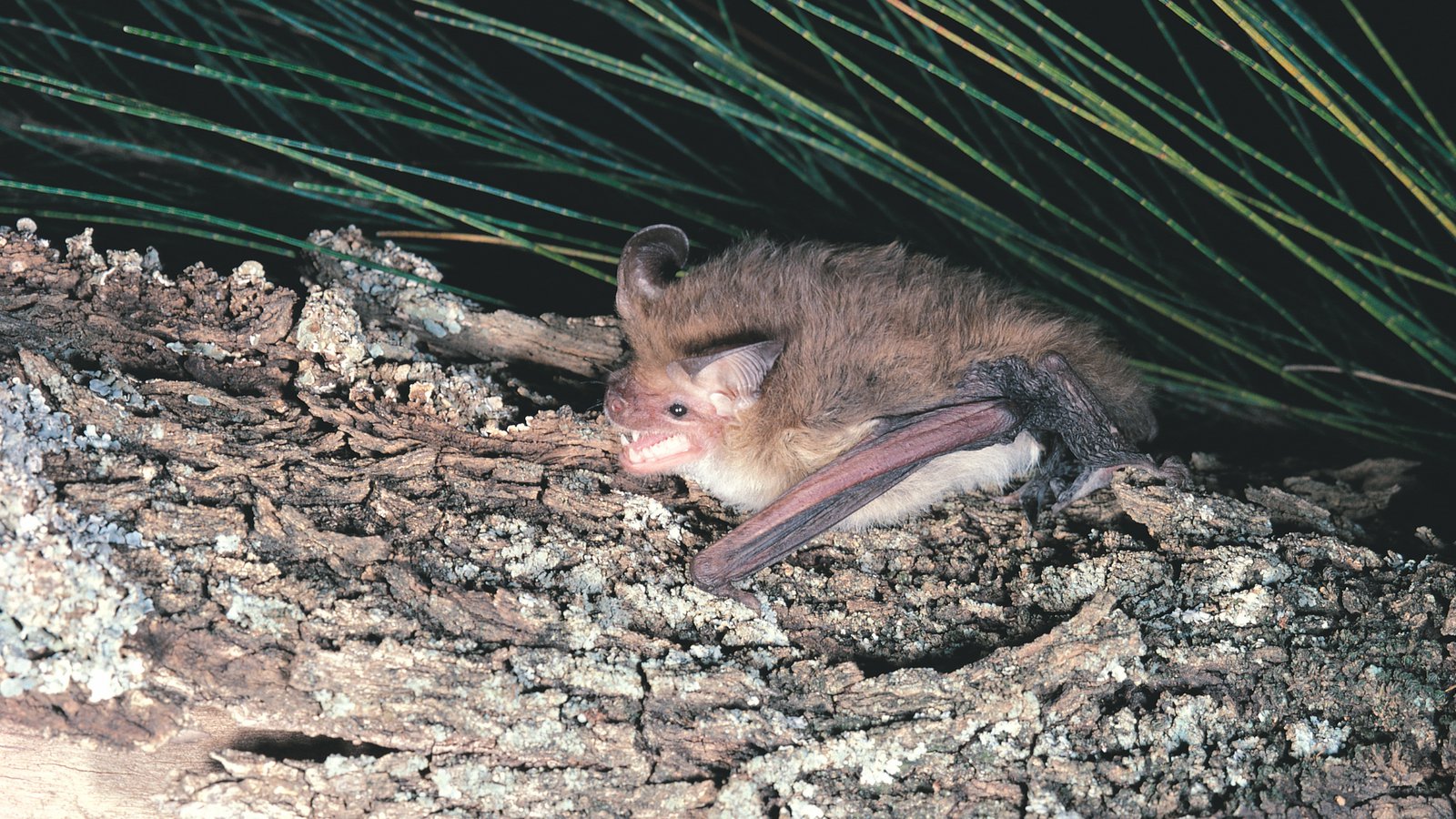Gould's Long-eared Bat
Introduction
Dark brown to dark grey in colour with a light grey underside. Very long ears that fold down when at rest.
Identification
Dark brown to dark grey in colour with a light grey underside. Very long ears that fold down when at rest. Wings are short and wide.
Habitat
Sclerophyll forests and woodland, including forest remnants.
Distribution
Eastern and south-western Australia.
Seasonality
It roosts in tree hollows of old eucalypts, but sometimes in buildings. Up to 25 female bats may live together in a colony, although males generally roost alone. Individuals can sometimes be found under the bark of trees and in old nests of birds.
Feeding and diet
It flies close to the ground when hunting and catches flying insects. It can also snatch non-flying insects off the ground or leaves. It usually eats its prey on the fly. It tends to hibernate in winter for stretches of up to eleven days at a time, living off fats stored during the late summer and early autumn.
Breeding behaviours
It only breeds once a year and usually gives birth to one or two young in late spring or early summer. The young are weaned at the age of six weeks and can be seen flying in January.
Danger to humans
Normally harmless, but it is best to avoid handling any bat because they may carry the potentially fatal Australian Bat Lissavirus (ABLV), which is transmitted through scratches or bites.




